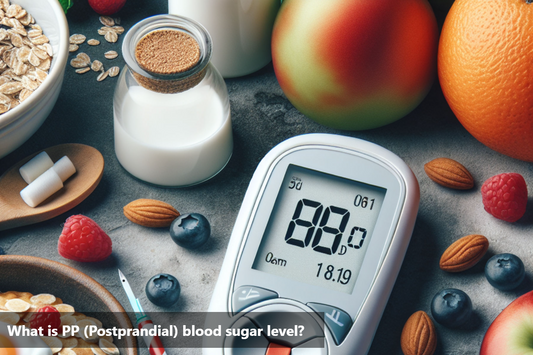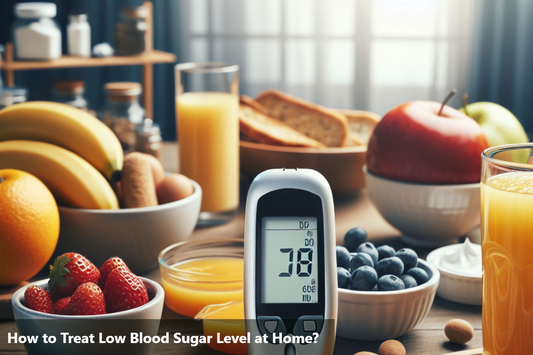The glycemic index (GI) is a measure that classifies carbohydrates based on their impact on blood sugar levels. Understanding what the glycemic index is and its role in health is crucial for making informed dietary choices.
The importance of glycemic index lies in its ability to help manage blood sugar levels, especially for individuals with diabetes. By choosing foods with a lower GI, one can better control their blood sugar and reduce the risk of chronic diseases.
Understanding Glycemic Index
The Glycemic Index (GI) measures how quickly carbohydrates in food raise blood sugar levels after consumption compared to a standard, usually glucose or white bread. Here's a simplified understanding:
Low GI Foods: These release glucose slowly into the bloodstream, resulting in gradual blood sugar increases. Examples include most vegetables, legumes, and whole grains.
Medium GI Foods: These release glucose moderately into the bloodstream, causing a moderate increase in blood sugar levels. Examples include some fruits, whole wheat products, and basmati rice.
High GI Foods: These rapidly raise blood sugar levels after consumption. Examples include sugary snacks, white bread, white rice, and sugary drinks.
Understanding the GI can help manage blood sugar levels, especially for individuals with diabetes, by choosing foods that result in slower and steadier increases in blood glucose. However, it's important to consider other factors like portion size and overall nutritional value when planning meals.
Factors Influencing Glycemic Index
Type of Carbohydrate: The type of carbohydrate in food affects its GI. Foods with simple carbohydrates, like sugars, generally have a higher GI than foods with complex carbohydrates, like whole grains and vegetables.
Amount of Processing: Highly processed foods tend to have higher GIs because processing breaks down the structure of carbohydrates, making them easier to digest and absorb quickly.
Fiber Content: Fiber slows down digestion and absorption, resulting in a lower GI. Foods high in fiber, such as whole grains, fruits, and vegetables, generally have a lower GI.
Fat and Protein Content: Foods that contain fat and protein can lower the GI of a meal by slowing down the digestion and absorption of carbohydrates.
Cooking Methods: The way food is cooked can affect its GI. For example, cooking pasta al dente (firm) results in a lower GI compared to overcooking it.
Ripeness and Processing: The ripeness of fruits and vegetables and the degree of processing can influence their GI. Ripe fruits tend to have a higher GI than unripe ones, and processing methods can affect the GI of foods like potatoes.
Food Combination: Eating foods together can affect their overall GI. For example, consuming protein, fat, or acidic foods with carbohydrates can lower the GI of the meal.
How to Calculate Glycemic Index
To calculate the glycemic index (GI) of a food, you need to follow a specific formula. The GI of a food indicates how quickly the carbohydrates present in that food raise blood sugar levels. Here is a simple step-by-step guide on how to calculate the glycemic index:
Select a Standard: Begin by selecting a food containing 50 grams of carbohydrates as the standard for comparison. This standard food is usually glucose or white bread.
Test the Blood Sugar: Feed the food to a group of people after an overnight fast and measure their blood sugar levels over the next two hours at regular intervals.
Calculate the Average: Take the average of the blood sugar values obtained from all the participants and plot it on a graph against time.
Compare the Curves: Next, compare the blood sugar curve of the tested food with the curve of the standard food.
Determine the GI: The area under the two curves will help you calculate the GI of the food. The formula for GI calculation involves specific mathematical calculations based on these areas.
By following these steps, you can accurately calculate the glycemic index of a food and understand its impact on blood sugar levels.
Bottom Line
Understanding the glycemic index plays a significant role in effectively managing blood sugar levels and making informed dietary choices. It is a valuable tool that can have profound effects on individuals' overall health and well-being. Factors such as cooking methods and food processing techniques can greatly influence a food's glycemic response.
Moreover, knowing how to calculate the glycemic index of various foods gives people the power to control their nutritional intake effectively. This knowledge enables individuals to tailor their diet to suit their specific needs, whether they are looking to maintain consistent blood sugar levels or improve their overall health. By incorporating foods with lower glycemic index values into their diet, people can help prevent blood sugar spikes and crashes, ultimately promoting better health outcomes in the long run.
This Blog post is an initiative by DiabeSmart, to provide accurate and Nutritionist / Doctor approved information related to Diabetes. DiabeSmart is India's first Food brand designed specifically for Diabetics, that has been clinically tested on Diabetics and Pre-Diabetics to deliver 55% - 70% lower Sugar spikes. DiabeSmart is part of Lo! Foods - India's leading brand for Everyday Functional Health foods.











